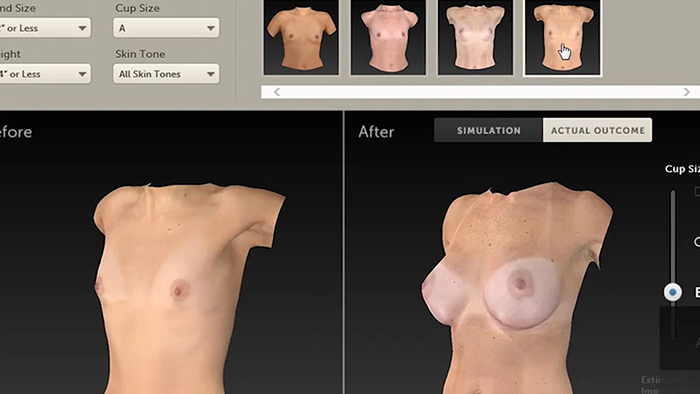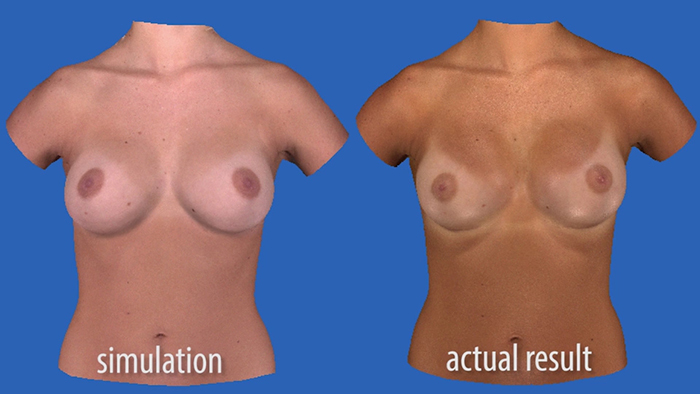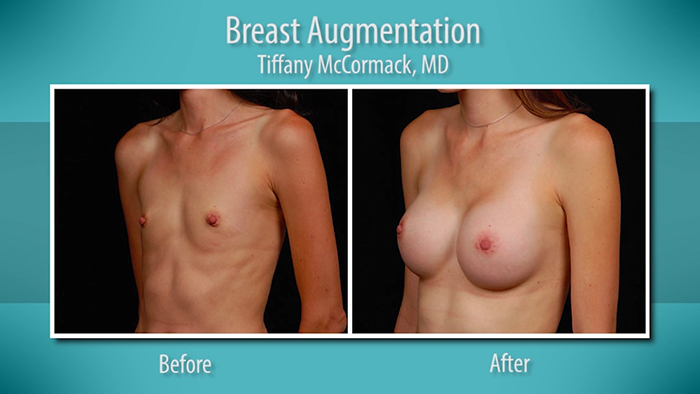We gathered three leaders in the field of breast augmentation, Dr. Bruce Van Natta of Indianapolis, IN, Dr. Tiffany McCormack of Reno, NV and Dr. Brad Bengtson of Grand Rapids, MI, to discuss the various tools that they use to help their patients understand what to expect from their breast augmentation. Managing expectations through proper communication is vital to any surgeon/patient relationship, regardless of the procedure, but it’s particularly true with breast augmentations. Why? Because most women who are seeking an implant describe their ideal breasts in terms of cup size, but surgeons think in terms of volume. Since cup size is not always an indicator of actual breast volume, this can result in miscommunication. One of the best ways to ensure that this doesn’t happen is to use 3D imaging.
3D Imaging is a Game Changer
For Dr. McCormack, “before and after pictures are key”. It gives her an opportunity to not only show patients the quality of her breast augmentation work, but it also allows new patients to compare their bodies to women with a similar build, helping them to visualize exactly how a certain size implant will look. The other tool that both Dr. McCormack and her patients love is 3D imaging which takes this visualization one step further. It literally allows surgeons to upload the patient’s picture and “actually place different size implants on their own chest and show them a visual”. Since it is incredibly difficult for most people to conceptualize volume, this a real game changer.

Dr. Bengtson couldn’t agree more. “3D imaging has just transformed my practice.” Many patients come into a consultation wanting a breast that, for whatever reason, isn’t going to work for their individual body. The 3D imaging technology allows the surgeon to show a patient the full range of breast that they can actually achieve. It’s a “great educational tool” that gives patients a realistic view of what to expect from their breast augmentation surgery. And managing expectations is vital to ensuring a happy outcome for both patient and surgeon alike.

The question, for Dr. Van Natta, is whether or not the computer can give a truly accurate rendering? “Can it predict how tissues are going to stretch when we put an implant in here?” Dr. McCormack has found the computer to be fairly accurate and where it’s not, it’s easy for the surgeon to point out “this is what the computer’s doing, but in real life, it may look a little different because of x, y and z”. Dr. Bengtson agrees. He’s not only been using 3D imaging for breast lifts, but he’s conducted studies in which he’s compared a patient’s actual post op results versus their imaging at 2, 4, and 10 years down the road, and it’s pretty close. “This is a real example of how technology is helping us to communicate with our patients” says Dr. Van Natta.

Bottom line, if you are looking to get a breast augmentation, booking a consult with a surgeon who has 3D imaging can help you to manage your expectations by allowing you to visualize what the different size implants will actually look like on your body.